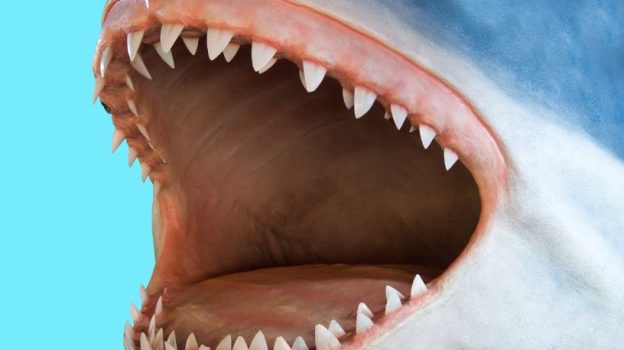The Megalodon, a prehistoric shark that roamed the oceans millions of years ago, has long been a subject of fascination and speculation. One of the most intriguing aspects of this ancient predator is its bite force. How powerful was it? And how does it compare to the sharks we know today?
What Was the Bite Force of a Megalodon Shark?
Estimating the bite force of an extinct animal is no easy task, but through the study of fossilized Megalodon shark teeth and jaws, as well as comparisons to modern sharks, scientists have made some educated guesses. It’s believed that the Megalodon had a bite force of around 10.8 to 18.2 metric tons (24,000 to 40,000 pounds). This incredible force is several times stronger than the bite of the largest crocodile and dwarfs the bite force of any shark in today’s oceans.
How Does Megalodon’s Bite Force Compare to Modern Day Sharks?
To put the Megalodon’s bite force into perspective:
Great White Shark Bite Force
The Great White Shark, one of the most powerful predators in today’s oceans, has a bite force estimated at around 1.8 metric tons (4,000 pounds). This means the Megalodon’s bite was potentially 10 times stronger.
Bite Force of the Bull Shark
The Bull Shark, known for its aggressive nature and powerful bite, has a force of approximately 589 kg (1,300 pounds).
Whale Shark
Even the massive Whale Shark, which feeds primarily on plankton, has a relatively weak bite in comparison.
Killer Whale
Some estimates suggest that the bite force of a killer whale can be around 19,000 psi (pounds per square inch). This is an impressive figure, especially when considering that the great white shark’s bite force is estimated to be around 4,000 psi. It’s worth noting that direct comparisons can be challenging due to differences in jaw structure and biting techniques. Nonetheless, the killer whale’s strong bite force, combined with its intelligence and cooperative hunting strategies, makes it one of the top predators in the ocean even compared to Megalodon.
Megalodon Jaw Size and Mouth Anatomy
The Megalodon’s jaw was a marvel of evolutionary engineering. Its jaws could span up to 7 feet wide, allowing it to engulf large prey.
It also had rows of teeth, with some reaching lengths of over 7 inches. These teeth were not only large but also thick and robust, designed to crush and tear through flesh and bone.
The arrangement of its teeth, combined with its powerful jaw muscles, allowed for a biting mechanism that could deliver its tremendous force efficiently.
What The Megalodon Ate
Given its size and power, the Megalodon was an apex predator, feeding on a variety of marine animals:
- Large marine mammals like whales were a primary food source. Fossil evidence suggests that Megalodons targeted the fins and flippers to immobilize their prey before delivering a fatal bite.
- Other sharks and large fish were also part of its diet. The Megalodon’s dominance in the food chain meant that it had little to no competition when it came to its choice of prey.
- Some scientists even speculate that they might have scavenged on carcasses, making use of their powerful bite to break down large chunks of meat quickly.
Conclusion
The Megalodon’s bite force is a testament to its place as one of the most formidable predators in Earth’s history. While we can only make educated guesses about the exact strength of its bite, the evidence suggests it was a force to be reckoned with. As we continue to study and learn more about this ancient giant, we gain a deeper appreciation for the incredible diversity and power of nature’s past inhabitants.






